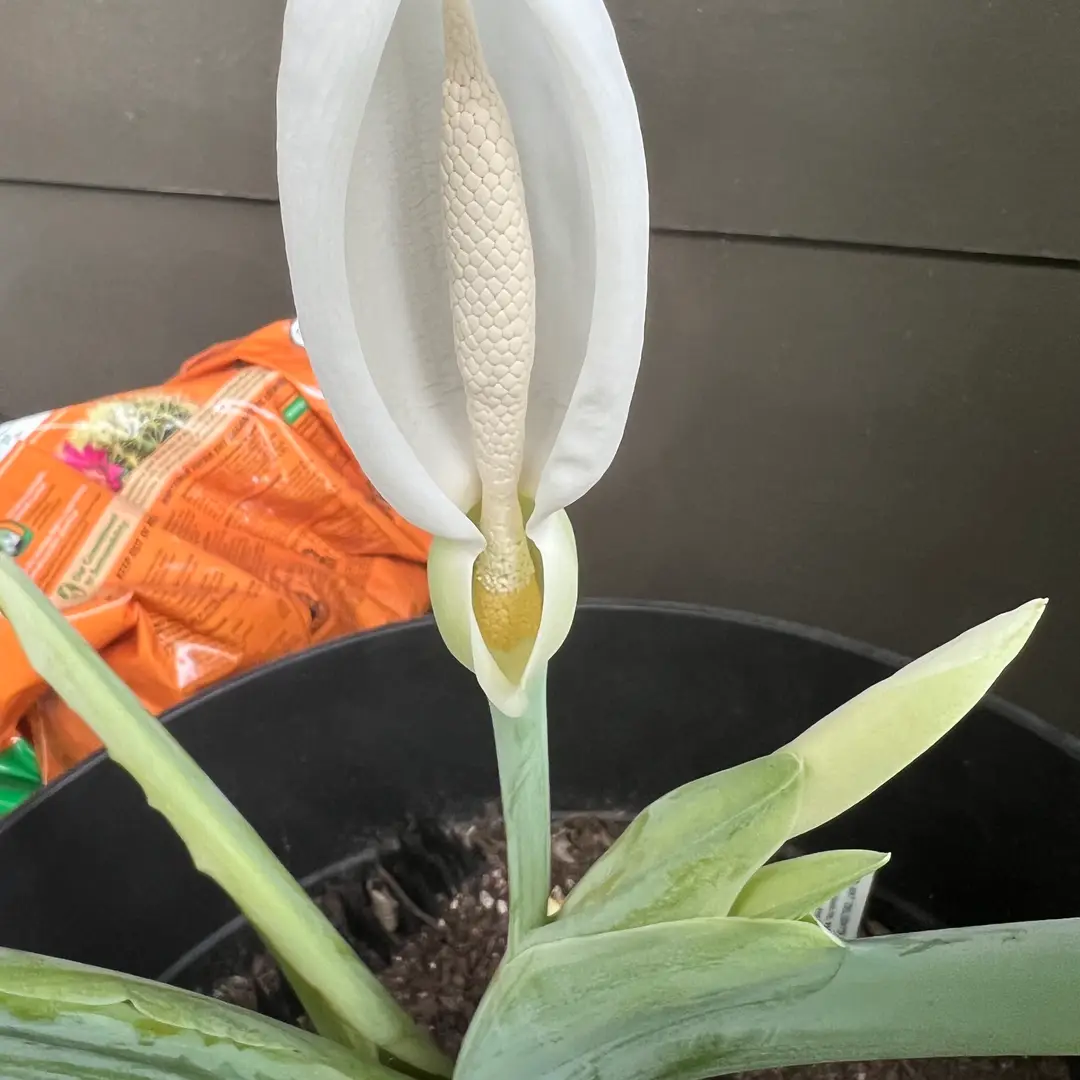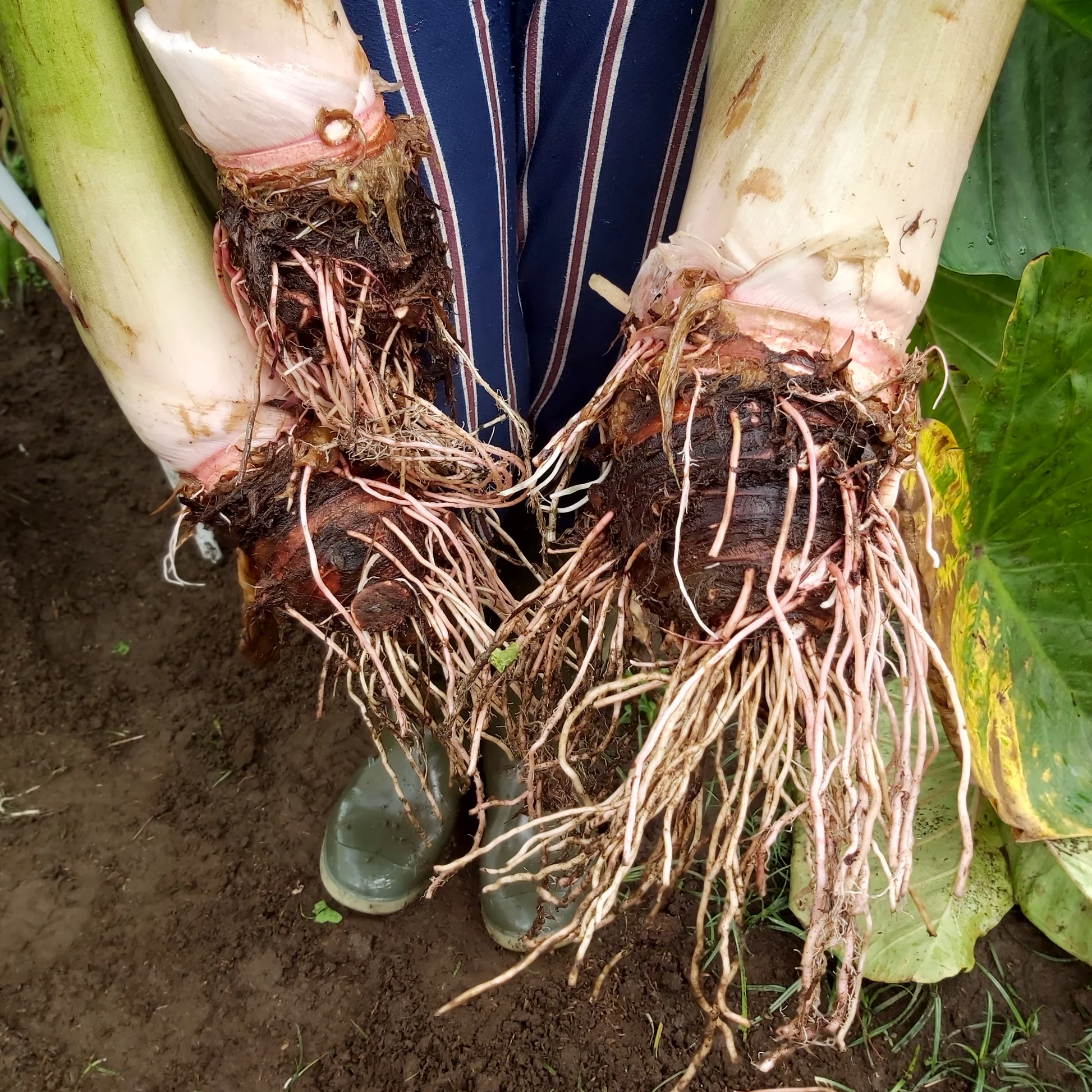Colocasia, commonly known as elephant ears, is a captivating genus of plants belonging to the Araceae family, renowned for their strikingly large, heart-shaped leaves that evoke the imagery of the majestic elephant’s ears. These tropical plants are not only aesthetically pleasing but also play a significant role in various cultures, culinary traditions, and even the ecological balance of their native habitats. This article delves into the botanical features of Colocasia, exploring the intricate details of their leaf structure, flower characteristics, and root system. Through this comprehensive analysis, we aim to unveil the secrets behind their remarkable adaptation, aesthetic appeal, and diverse applications.

Leaf Structure: A Symphony of Size and Shape
The most distinguishing characteristic of Colocasia is undoubtedly its prominent leaves. These large, heart-shaped structures, often resembling the ears of an elephant, are a testament to the plant’s remarkable ability to capture sunlight and efficiently facilitate photosynthesis.
Leaf Blade: The Epitome of Size and Shape
The leaf blade, also known as the lamina, is the prominent, flattened portion of the leaf, giving it its characteristic shape. Its size can vary considerably depending on the species and growing conditions, ranging from a few inches to several feet in diameter. The leaf blade is typically heart-shaped, with a broad base and a pointed tip, although some species may exhibit more rounded or elongated shapes.
The leaf surface can be smooth or slightly textured, with a glossy or matte finish. The color of the leaf blade can range from deep green to various shades of purple, depending on the species and environmental factors. Some Colocasia varieties even display striking patterns or variegation, adding to their visual appeal.
Venation Patterns: A Roadmap of Efficiency
The leaf’s intricate venation pattern plays a crucial role in the plant’s ability to transport water and nutrients effectively. Colocasia leaves exhibit a prominent midrib, from which a network of secondary and tertiary veins radiate outward, forming a distinct pattern that resembles the branching structure of a tree.
These veins not only provide structural support to the leaf but also facilitate the efficient movement of water and essential nutrients throughout the plant. This well-developed vascular system allows Colocasia to thrive in a wide range of environmental conditions, making them adaptable and resilient.
Leaf Petiole: The Sturdy Foundation
The leaf petiole, or the stem that connects the leaf blade to the main stem of the plant, is another essential component of the Colocasia leaf structure. The petiole is typically long and stout, providing a sturdy foundation to support the large, heavy leaf blade.
The petiole can vary in color, ranging from green to shades of purple or red, depending on the species and growing conditions. In some cases, the petiole may be marked with distinctive patterns or stripes, adding to the overall aesthetic appeal of the plant.
The length and thickness of the petiole play a crucial role in the plant’s ability to adapt to different environments. In areas with strong winds or heavy rain, the sturdy petiole helps the leaf blade withstand the elements and maintain its upright position.
Leaf Attachment: A Versatile Connection
The way in which the leaf is attached to the plant’s stem, known as the leaf attachment, is another noteworthy feature of Colocasia. The leaves can be either peltate, where the petiole is attached to the center of the leaf blade, or cordate, where the petiole is attached to the base of the leaf blade.
Peltate leaves are often associated with Colocasia species that grow in aquatic or semi-aquatic environments, as the central attachment point allows the leaf to float on the water’s surface more effectively. Cordate leaves, on the other hand, are more common in terrestrial Colocasia species, providing a more stable attachment to the plant’s stem.
The leaf attachment method not only affects the overall appearance of the plant but also influences its ability to adapt to different habitats and environmental conditions.
Flower Characteristics: Revealing the Hidden Beauty
While the large, striking leaves are the primary focus of attention when it comes to Colocasia, the plants also possess intriguing floral features that are worth exploring.

Inflorescence Structure: A Striking Display
The Colocasia inflorescence, or the flowering structure, is a complex arrangement of modified leaves and reproductive organs. The inflorescence typically consists of a central, elongated spadix, which is surrounded by a large, petal-like structure called a spathe.
The spathe can be a variety of colors, ranging from white to shades of green, purple, or even red, depending on the species. The spadix, on the other hand, is the true reproductive structure, containing both male and female flowers.
The arrangement and appearance of the inflorescence can vary significantly among Colocasia species, with some exhibiting a more compact, upright structure, while others may have a more open, drooping display.
Floral Anatomy: A Closer Look
The individual flowers of Colocasia are relatively small, with a simple structure consisting of a perianth (the collective term for the sepals and petals) and the reproductive organs (stamens and pistils).
The perianth is typically inconspicuous, with small, scale-like structures that are often overlooked. The stamens, which produce the pollen, are arranged in a ring around the central pistil, the female reproductive organ.
One of the unique features of Colocasia flowers is the presence of a floral appendage, known as a sterile appendix, which extends from the top of the spadix. The function of this appendix is not entirely clear, but it is believed to play a role in attracting pollinators and facilitating the transfer of pollen.
Pollination and Seed Production
Colocasia plants are typically pollinated by a variety of insects, including flies, beetles, and even small mammals. The unique inflorescence structure and the presence of the sterile appendix help to attract and guide these pollinators towards the reproductive organs.
Once pollinated, the female flowers develop into small, berry-like fruits that contain a few seeds. The seeds of Colocasia are small and lightweight, allowing them to be easily dispersed by wind, water, or animal movement.
The seed production and dispersal mechanisms of Colocasia play a crucial role in the plant’s ability to colonize new areas and maintain its presence in the ecosystem.
Root System: The Unseen Foundation
While the impressive leaves and intriguing flowers of Colocasia are the most visually striking features, the plant’s root system is equally important and deserves consideration.

Rhizome Structure: A Subterranean Network
The primary underground structure of Colocasia is the rhizome, a horizontal, stem-like structure that grows just below the soil surface. The rhizome is responsible for the plant’s vegetative reproduction, as it can give rise to new shoots and leaves.
The rhizome is typically thick and fleshy, with a network of smaller roots that branch out from the main structure. These roots not only anchor the plant firmly in the soil but also absorb water and nutrients from the surrounding environment.
Aerial Roots: Adapting to Aquatic Environments
In addition to the subterranean root system, some Colocasia species also develop aerial roots, which emerge from the stem above the soil surface. These aerial roots play a crucial role in the plant’s ability to thrive in aquatic or semi-aquatic environments, as they can provide additional support and help to anchor the plant in areas with high water levels.
The aerial roots of Colocasia are often long and slender, with a spongy texture that helps them to float on the water’s surface or cling to the soil or rocks. These roots can also contribute to the plant’s ability to absorb oxygen and other essential nutrients from the surrounding environment.
Nutrient and Water Absorption
The extensive root system of Colocasia, both underground and aerial, is responsible for the plant’s ability to efficiently absorb water and nutrients from the soil or aquatic environment. The rhizome and roots are equipped with a network of specialized cells and tissues that facilitate the uptake and transport of these essential resources.
The root system also plays a crucial role in the plant’s ability to withstand environmental stresses, such as drought or water-logged conditions. By adjusting the growth and development of the roots, Colocasia can adapt to a wide range of soil and moisture levels, ensuring its survival in diverse habitats.
Conclusion
The Colocasia, or elephant ears, is a truly remarkable genus of plants that captivates with their striking foliage, intriguing floral displays, and adaptable root systems. Through this comprehensive exploration of their botanical features, we have unveiled the intricate details that contribute to their remarkable adaptability, aesthetic appeal, and diverse applications.
From the impressive size and shape of their leaves to the unique structure of their flowers and the robust foundation of their root systems, Colocasia plants have evolved to thrive in a wide range of environments, showcasing the incredible versatility of these botanical wonders. As we continue to unravel the secrets of these enigmatic plants, we can better appreciate their role in various cultures, culinary traditions, and the delicate balance of their native ecosystems.
In addition, Colocasia is a vegetable with high nutritional value, providing many essential vitamins, minerals and other beneficial compounds.
Ultimately, the Colocasia genus stands as a testament to the incredible diversity and adaptability of the plant kingdom, reminding us of the endless possibilities that lie within the natural world.
FAQs
- What are the distinguishing features of Colocasia plants?
Colocasia plants are known for their large, heart-shaped leaves, often with prominent veins. They grow from underground corms or tubers and can reach impressive heights, depending on the variety.
- How do Colocasia flowers look?
Colocasia flowers are relatively inconspicuous compared to their foliage. They consist of a spadix (a spike of tiny flowers) enclosed by a spathe (a modified leaf). The flowers are typically white or yellowish.
- What are the different types of Colocasia leaves?
Colocasia leaves come in various shapes, sizes, and colors. Some varieties have solid green leaves, while others exhibit stunning variegation with shades of purple, pink, or black. The leaf texture can also vary from smooth to slightly wrinkled.
- Do Colocasia plants produce fruits?
Yes, Colocasia plants produce small, berry-like fruits after flowering. However, these fruits are not typically consumed and are mainly for seed production.
- Are there any unique adaptations of Colocasia plants?
Colocasia plants are well-adapted to wet environments due to their ability to tolerate waterlogged soil. They also possess a specialized storage organ (the corm or tuber) that allows them to survive periods of drought or adverse conditions.


